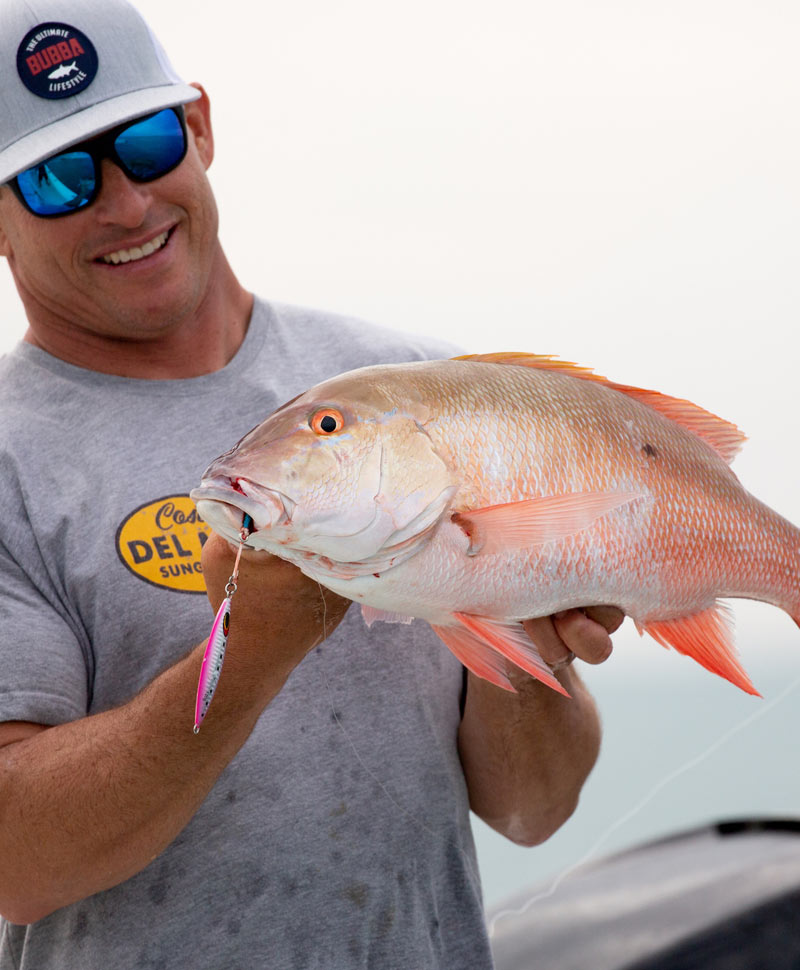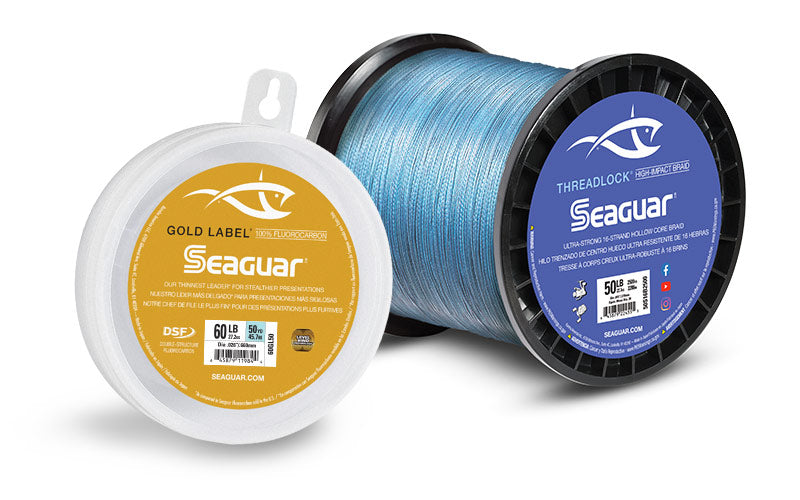
Slow-Pitch Jigging; It's More Than a Trend
Over the past several years, no technique in the saltwater scene has been talked about as much as slow-pitch jigging. What started as a super-technical way to catch fish in Japan nearly two decades ago has become a phenomenon in America in recent years. It all started in the states, with the epicenter being South Florida, with a handful of anglers using it with great success before word spread. It's now being used across the country, proving itself as a valuable tool for countless species.
Among the fans of the emerging technique are California's Ali Hussainy and Florida's Rush Maltz of the Local Knowledge Fishing Show. They each find success with the method on home waters and when traveling to film their show.

Vertical Jigging versus Slow-Pitch Jigging
Metal lures jigged beneath the surface have been used as long as anglers have been fishing, but the differences between the vertical jigging method, also called "speed jigging," and the newer arriving slow pitch mainly comes down to how they are fished. Fishing vertically, many anglers drop their jigs to the bottom and quickly retrieve them while ripping their rods up to imitate a fleeing baitfish when speed jigging.
On the other hand, slow-pitch jigging is a way to get the jig to flutter and fall like an injured or dying baitfish. Both methods work, but slow-pitch jigging has gained a foothold in the fishing world because of its uniqueness and effectiveness in catching various predatory fish. Even species on the bottom that are accustomed to their food falling to them are fair game with this technique.
"We do a ton of jigging in Florida," said Maltz. "The main difference between slow pitch and what I typically do more of, speed jigging, is the tackle used and how you jig. Standard vertical jigging is violent and much faster to get the fish to chase, while slow pitch is much more rhythmic and the jig flutters and falls to the fish."
Slow-pitch rods are specialized, much lighter and designed to work the jigs and allow them to flutter downward. Vertical jigging requires beefier tackle, according to Maltz. "It's mainly due to the species, where vertical jigging appeals to hard-fighting fish like jacks, tuna, kings, and bonita," he said. "You can still catch them slow pitch jigging, but the style of fishing closer to the bottom opens it up to more fish species, including grouper and snapper species."
While everything about the two jigging methods has opposing styles and gear, Maltz uses the same line for both.

"No matter how you are jigging, having a good quality braided line is very important as it will cut through the water better and give you better control of your jig," he said. "I use 50 lb Threadlock Hollow Core because of how thin and strong it is. If I'm slow pitch jigging for bottom fish, I like 60 lb Gold Label fluorocarbon. It has the strength to prevent chaffing from the teeth of the bottom fish and because you are fishing the jig slowly, the thinner diameter helps keep your line less visible to the fish."
Maltz’s co-host, Ali Hussainy agrees on the gear differences between the different jigging methods. “Standard vertical jigging rods are shorter, thicker, and very parabolic,” he said. “Most are between 5 and 6-feet long, a longer rod would break your back fighting big fish. Slow pitch jigging rods are specialized, very thin and a little longer.”

Slow Pitch California Rockfish
With the Local Knowledge TV show, Hussainy travels to fishing hotspots chasing the best species in the prime times. Still, fishing for rockfish out of San Diego, California, is one of his favorite pastimes.
"A lot of guys overlook the great rockfish bite and focus on the glory fish like tuna," he began. "From about Halloween until May, the rockfish bite in California and Baja California is hard to beat and slow pitch jigging is a great way to catch them. With the many different rockfish species we have, it's so much fun to fish for them and their meat makes the best fish tacos."
Generally, Hussainy and crew search for water between 125 and 425 feet where rock and sand meet. Hard bottoms and rock patches are critical for the variety of rockfish species in his region. The gear used is part of why he likes to use slow pitch jigging for vermillion and copper snapper, lingcod, and other species.
"You are using light rods, reels, and lines and it's very effective and they put up a great fight on that gear," said Hussainy. "We use Penn Fathom reels in the 8 and 10 sizes and the Fathom 400 low profile reel on a Penn Battalion II Slow Pitch rod."

Hussainy spools the reels up with 50 lb Seaguar Threadlock Hollow Core braided line with a leader of 40 lb Gold Label fluorocarbon, citing the thin diameter of both lines as crucial for the technique.
"You're most often fishing 225 to 300 feet deep and the thin diameter of those lines cuts through the water much better," he said. "You get more action on a small jig in relatively deep water. Threadlock is incredibly strong, and so is Gold Label; it's my go-to combination for the light stuff."
Speaking of jigs, the Sea Falcon is a popular option for slow pitch fans, along with the Williamson Kensaki and Koika that Hussainy likes, mainly in the 6-to 10-ounce range, varying it depending on the depth and current. Color, according to Hussainy is not as important as getting it in front of fish in many situations.
"We gently lift the rod and let the jig sweep back down with your rod doing the work," he said. "That makes this technique so deadly; it's a way to imitate a dying baitfish. You can also wind up four or five cranks and let them fall back down to get them to bite. It's so much fun and we're all still learning about the technique, but there are some real gurus with the technique like Benny Ortiz down in Florida who helped pioneer the fishing style in America."
Slow pitch jigging has taken the fishing world by storm and as more anglers learn how effective it is, anglers who give it a shot will catch more fish with the technique. It's something that's still evolving and we're sure to hear more about it as more anglers use it in our fisheries.